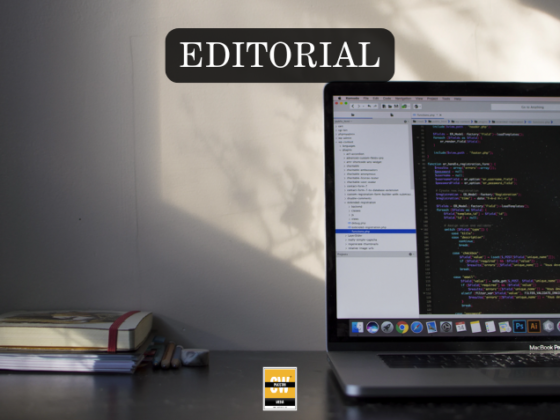From orbit Karachi looks immovable, a sprawl of concrete and light stitched along the Arabian Sea, a city of more than twenty million that has expanded until land and water blur. But satellites see what most residents cannot: the ground itself is slipping away. Between 2014 and 2016, sections of southern and eastern districts subsided at rates as high as thirty-eight millimeters a year—nearly twenty times faster than the global average sea-level rise of two millimeters. Landsat imagery tracing shoreline changes between 1989 and 2018 shows the sea consuming the coast at an average of 2.4 meters annually, and on fragile barrier islands like Bundal and Buddo the retreat is even more violent, exceeding fourteen meters each year. These figures are not projections, not speculative models of the distant future, but cold measurements of a crisis already underway. The city is being undone from two directions at once: the ocean pushing in, the land sinking down.
The forces driving this are as human as they are natural. Aquifers are drawn down by unregulated wells, draining the buoyancy from soils until they compact and collapse. Developers reclaim wetlands and mangroves, loading soft sediments with concrete and glass that inevitably settle and sink. Water and sewerage networks, already failing, leak continuously into the ground, saturating it and undermining its integrity. Every crack in a pipe is a slow invitation to subsidence. Meanwhile tides, storms, and cyclones gnaw at the coast, and with the disappearance of barrier islands and mangrove belts, natural buffers are lost. The result is a landscape whose edges and foundations are unstable, eroding, collapsing in increments too small to notice until a street buckles, a neighborhood floods, or a lagoon breaches into the sea.
The evidence is starkest when storms arrive. In 2022 Pakistan endured one of its worst flood seasons in living memory; one-third of the country lay underwater, and the city’s streets, underpasses, and homes filled with water that drainage systems were never built to handle. In 2024 heavy monsoon rains once again paralyzed the metropolis, with entire arteries submerged and power cut to millions. Then in August 2025, torrential rains dropped more than 163 millimeters in less than a day near Karachi’s airport—roughly four times the capacity the drainage system was engineered for—submerging roads, killing dozens, and shutting down schools and businesses. These were not isolated events. Urban flooding has become a seasonal certainty, but with the added menace of subsidence, every storm surge cuts deeper, every high tide travels further inland. What the radar beams show in millimeters each year, the rains reveal in hours.
Technology is both witness and potential remedy. Without InSAR—interferometric synthetic aperture radar—the collapse would remain anecdotal, explained away as bad drainage or poor construction. InSAR, using radar pulses from satellites like Envisat and Sentinel, can detect movements of just a few millimeters, and it was through these eyes in the sky that the hidden descent was exposed. Landsat images, stacking decades of shoreline retreat into a single narrative, showed where the sea had advanced and where land had dissolved. Tide gauges and rainfall records filled in the picture, confirming that the city’s vulnerability is not only to the sky and the sea but to the ground itself. The irony is that this knowledge often comes from abroad—European, American, Japanese satellites—measuring Karachi more precisely than the city measures itself.
But measurement is not mitigation. Other technologies, long proven elsewhere, could turn the knowledge of collapse into systems of survival. Smart water grids, using IoT sensors to detect pressure drops and leaks, keep losses in Tokyo or Singapore among the lowest in the world; in the city, such a system could prevent the very seepage that weakens soils and triggers subsidence. Groundwater monitoring through embedded sensors could track aquifer depletion in real time, published on open dashboards so that extraction is no longer invisible. Drones could survey vulnerable districts after every storm, creating high-resolution risk maps far more current than the outdated municipal records that still guide much of planning. AI models trained on InSAR displacement data, rainfall records, and hydrological inputs could predict which neighborhoods will flood first in the next storm, which barrier islands are approaching collapse, which reclaimed lands are no longer safe to build on. And above all, a digital twin—a live computational replica of the metropolis—could integrate all this data, simulate scenarios, and test interventions before concrete is poured. In Singapore and Helsinki such twins are already used; here the twin would not be a planning luxury but an existential necessity.
The politics, however, are as unstable as the ground. Much of the subsidence comes from reclamation projects controlled by powerful developers who benefit from building on land never meant to hold weight. Regulating aquifer pumping would cut into the profits of tanker mafias that thrive on scarcity. Introducing transparent data—whether through IoT sensors, dashboards, or blockchain—does more than reveal risk; it threatens entrenched interests. To govern erosion machines is to confront political ones.
Still, there is no real choice. Subsidence rates of thirty millimeters per year do not self-correct, and coastlines retreating at meters each year will not return on their own. The sea level at Karachi port is rising between two and four millimeters annually depending on the dataset, and when the ground itself is falling, the effect compounds. Every new monsoon proves the point: storms no longer drain, they linger; waters do not recede, they settle; tides rise not only against the shore but beneath the soil. For residents this manifests not in millimeters or meters but in homes that flood more often, wells that turn saline, streets that cave in. Displacement is already underway, slow and partial, but growing.
And yet Karachi could become not just a cautionary tale but a blueprint. If the city can turn satellites, sensors, AI, and public data into a system of resilience—if it can make the invisible collapse visible to every planner, policymaker, and citizen—it could show other Pakistani cities the way forward. Hyderabad, Thatta, Sukkur, Peshawar—all face their own versions of water stress, flooding, and unstable ground. The city’s problems erupted earlier and larger, but that gives it the chance to pioneer solutions: integrated monitoring, predictive modeling, resilient infrastructure, and nature-based defenses like mangrove restoration and wetland buffers. If Karachi can master its erosion machines, it can help the rest of Pakistan confront theirs.
Every twelve days, Sentinel-1 passes overhead and adds another set of data points to the descent. From above the trajectory is unmistakable: a city in millimeters of free fall. From below, it still looks like flooding, unlucky storms, broken drains. The technology exists to close that gap, to transform measurement into action, to prevent erosion from becoming erasure. The question is whether the city can act quickly enough, not only to save itself but to lead others who will face the same fate.
Source
Follow the SPIN IDG WhatsApp Channel for updates across the Smart Pakistan Insights Network covering all of Pakistan’s technology ecosystem.






